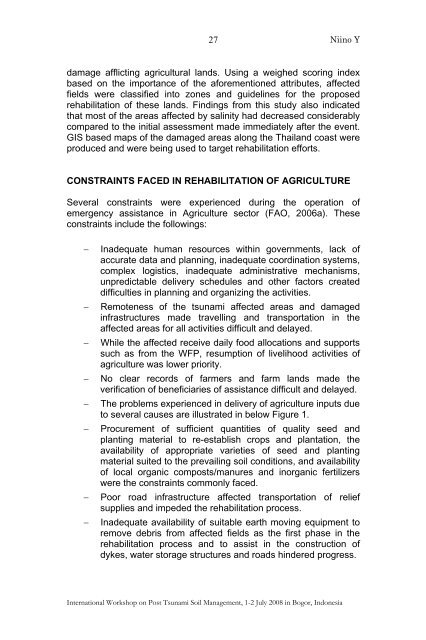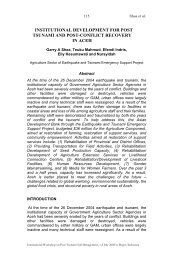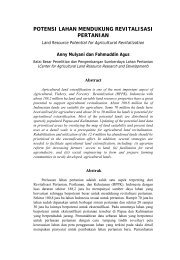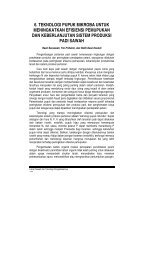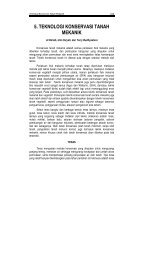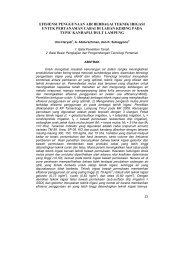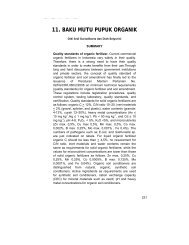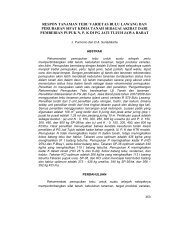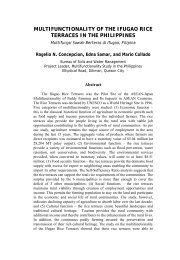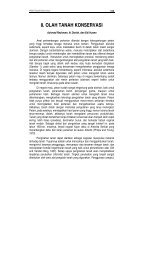Proceedings - Balai Penelitian Tanah
Proceedings - Balai Penelitian Tanah
Proceedings - Balai Penelitian Tanah
Create successful ePaper yourself
Turn your PDF publications into a flip-book with our unique Google optimized e-Paper software.
27<br />
Niino Y<br />
damage afflicting agricultural lands. Using a weighed scoring index<br />
based on the importance of the aforementioned attributes, affected<br />
fields were classified into zones and guidelines for the proposed<br />
rehabilitation of these lands. Findings from this study also indicated<br />
that most of the areas affected by salinity had decreased considerably<br />
compared to the initial assessment made immediately after the event.<br />
GIS based maps of the damaged areas along the Thailand coast were<br />
produced and were being used to target rehabilitation efforts.<br />
CONSTRAINTS FACED IN REHABILITATION OF AGRICULTURE<br />
Several constraints were experienced during the operation of<br />
emergency assistance in Agriculture sector (FAO, 2006a). These<br />
constraints include the followings:<br />
− Inadequate human resources within governments, lack of<br />
accurate data and planning, inadequate coordination systems,<br />
complex logistics, inadequate administrative mechanisms,<br />
unpredictable delivery schedules and other factors created<br />
difficulties in planning and organizing the activities.<br />
− Remoteness of the tsunami affected areas and damaged<br />
infrastructures made travelling and transportation in the<br />
affected areas for all activities difficult and delayed.<br />
− While the affected receive daily food allocations and supports<br />
such as from the WFP, resumption of livelihood activities of<br />
agriculture was lower priority.<br />
− No clear records of farmers and farm lands made the<br />
verification of beneficiaries of assistance difficult and delayed.<br />
− The problems experienced in delivery of agriculture inputs due<br />
to several causes are illustrated in below Figure 1.<br />
− Procurement of sufficient quantities of quality seed and<br />
planting material to re-establish crops and plantation, the<br />
availability of appropriate varieties of seed and planting<br />
material suited to the prevailing soil conditions, and availability<br />
of local organic composts/manures and inorganic fertilizers<br />
were the constraints commonly faced.<br />
− Poor road infrastructure affected transportation of relief<br />
supplies and impeded the rehabilitation process.<br />
− Inadequate availability of suitable earth moving equipment to<br />
remove debris from affected fields as the first phase in the<br />
rehabilitation process and to assist in the construction of<br />
dykes, water storage structures and roads hindered progress.<br />
International Workshop on Post Tsunami Soil Management, 1-2 July 2008 in Bogor, Indonesia


